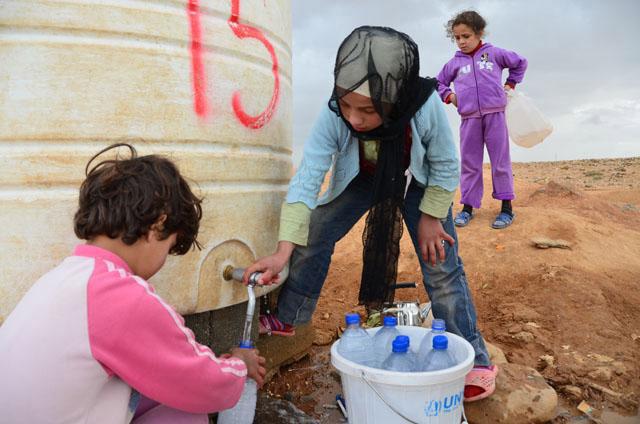You are here
Additional water to supply ‘struggling’ northern governorates
By Hana Namrouqa - May 17,2018 - Last updated at May 17,2018

The ministry is providing additional water to the northern governorates from different sources, including new and rehabilitated wells (File photo)
AMMAN — The northern governorates, where water demand increased by 40 per cent over the past seven years, are set to receive additional water to ease an expected surge in demand during the holy month of Ramadan and the hot season, government officials said on Thursday.
New water resources have entered the country’s network of fresh water resources, the officials said, indicating that the new water sources already started supplying the north with additional water.
“The northern governorates have started receiving a total of 1,200 cubic metres of water per hour from a combination of different sources. The additional amount seeks to address water shortage and an expected rise in demand in the north,” Water Authority of Jordan (WAJ) Secretary General Iyad Dhayat said.
He underlined that WAJ, an affiliate of the Ministry of Water and Irrigation, is targeting the north of the country ahead of summer and Ramadan, because the region suffers acute water scarcity due to the fact that it hosts the majority of the Syrian refugees in Jordan.
With over 1.4 million Syrian refugees living in the country, demand for water has increased, especially in the north, where the water per capita share has dropped by half since Syrian refugees began arriving in the country, according to the ministry.
As the water per capita share in the northern governorates of Jerash, Ajloun, Irbid and Mafraq has always been below the national average and has only exacerbated with the north hosting most of the Syrian refugees, the ministry last year announced a strategy to improve water supply in the north, according to ministry’s spokesperson Omar Salameh.
The 2016-2025 National Water Strategy indicates that the per capita share dropped from 147 cubic metres per year to 123 cubic metres per year since the start of the Syrian crisis.
“A total of 200 cubic metres of water per hour will be pumped from the National Water Carrier Project, with the amount set to increase in later stages,” Salameh highlighted.
The National Water Carrier Project is one of Jordan’s strategic water project that seeks to connect water projects in the south of the Kingdom to projects in the central and northern regions, in order to better supply water-distressed areas, especially in the north, via an extensive network of 6,00 kilometres of pipelines, according to the ministry.
Salameh highlighted that, in addition to the national carrier, the ministry is providing additional water to the north from different sources, including new and rehabilitated wells.
Water subscribers in the north welcomed the new announcement, indicating that their region is suffering from worsening situation in terms of availability of water.
Mohammad Roussan, a resident of Koura District in Irbid Governorate, said that the water situation in Irbid during summer is “hell”.
“We are supposed to receive water every 10 days or every two weeks if there are no problems with water supply. But, the fact is we do not receive water this often, we resort to buying our own water via tankers because we receive water sometimes once a month,” Roussan told The Jordan Times.
As he expressed hope for a better water supply this dry season, Roussan said he expects "no significant change" to the situation.
Amal Zahran, a resident of Souf in JerashGovernorat, echoed Roussan’s complaints.
“It is a very sad reality that we have gotten used to having very little water during intermittent periods. We are supposed to get water every two weeks, but weeks pass without a drop of water,” Zahran, a social worker at a development cooperative in Jerash, said, voicing hopes for an “easier summer this year”.
Related Articles
The Water Authority of Jordan (WAJ) has started rehabilitating a spring in Balqa Governorate to produce more water as demand increases during the summer, a government official said on Monday.
AMMAN — Jordan’s water deficit dropped by 8 per cent this year compared to 2017, government officials said, attributing the decline to an in
Water subscribers in the northern governorates increased by 15 per cent in 2014 due to the fact that the region hosts the majority of Syrian refugees residing in the Kingdom, government officials said on Saturday.

















